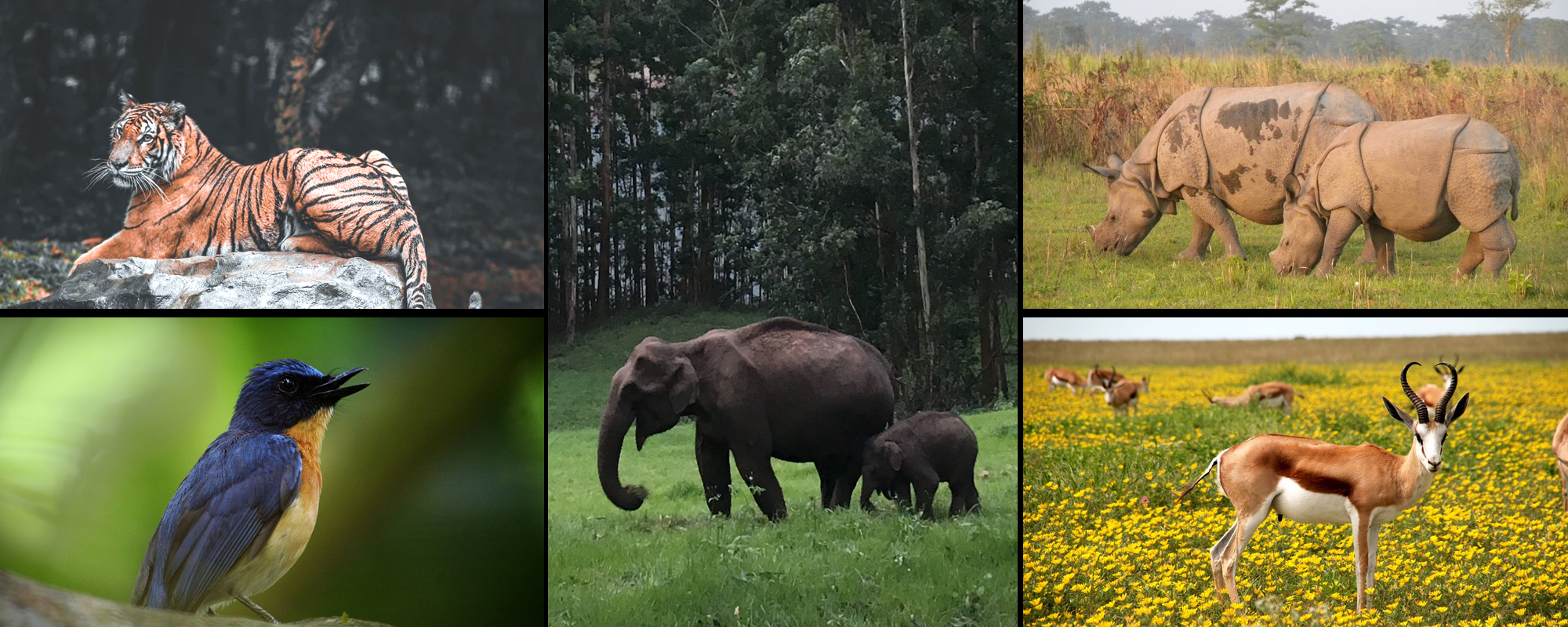
Located in the absolutely stunning topography of the Andaman Islands, the Interview Island Wildlife Sanctuary is a stretch of 101sq. kilometers of area and divides North Andaman Island and Middle Andaman Island. The Interview Island Wildlife Sanctuary was given its present status in the year 1985 mainly to protect the elephants, which were transported here from the mainland for timber works and were later on left along with the operation. This is the biggest island sanctuary in Andaman and Nicobar Islands and inhabits a wide variety of flora and fauna species which is a tempting invitation for many young travelers.
The island is not inhabited by many humans except for a police outpost on the West Coast and a forest labor shed on the East Coast. The area is covered with semi-evergreen forests, littoral forests, and mangroves, which makes for an ideal habitat for many exotic species of fauna, and the blooming flowering plants enhance the breathtaking beauty of the already spectacular sanctuary. For the protection of this nature sanctuary, the forest department does not allow night trips and special permission is required for day trips as well. In fact, the small trip you take to reach the sanctuary is a sight to behold whether it’s a flight trip or a ferry ride. This is one of the main attractions of the Andaman and Nicobar Island with an unbelievable flora and fauna that will not disappoint you.
Wildlife paramours can explore the place and spot numerous wildlife through binoculars and the bird watchers will have no less delightful time listening to the rhythmic chirping and humming of distinct bird species. Apart from these activities, several watersport activities are also organized in the nearby Inglis Island that is in the proximity of the wildlife sanctuary. You can enjoy activities such as scuba diving, snorkeling, trekking, etc., after exploring the Interview Island Wildlife Sanctuary.
The landscape of the sanctuary is filled with semi-evergreen forests, mangroves, littoral forests, and marshlands. The floral species found here are Dipterocarpus alatus, A. Chaplasha, Sterculia campanulate, Artocarpus lakoocha, and Pterocarpus dalbergioides, etc.
Mammals: Elephant, Common Palm Civet, Spotted Deer, Andaman Wild Pig, Andaman Masked Palm Civet, Three-Striped Palm Squirrel, etc.
Birds: Andaman Wood Pigeon, Andaman Woodpecker, White-Bellied Swiftlets, Andaman Cuckoo-Dove, White-headed Starling, Edible-nest Swiftlets, Andaman Drongo, Andaman Serpent-eagle, Andaman Teal Anas, Andaman Crake, Andaman Treepie, etc.
The climatic conditions in this wildlife sanctuary are mostly tropical in nature. This area experiences a perpetually humid weather condition with no chilled winters and hot summers with long monsoons. Evenings here are very pleasant with stunning sunset views.
The sanctuary can be visited anytime throughout the year as the weather is always conducive and pleasant to explore the area. Still, the best time to visit the Interview Island Wildlife Sanctuary is from October to May as the monsoons are very heavy here and can be a hurdle while you trek.
Nearest Train Station: There are no railheads in the Interview Island. The closest railway station is at Chennai, at about 1345km away. After this, you can take a flight to Port Blair or a ferry ride is also available.
Nearest Airport: The nearest airports that you can take a flight to are in the cities of Port Blair, the capital of Andaman Island, along with Chennai and Vishakhapatnam in Tamil Nadu.
Road Accessibility : The sanctuary is not connected through a road network. Travelers can take a ferry ride to the sanctuary from and to Mayabunder Township in the North Andaman Islands. This township is around 20km away from the wildlife sanctuary.
Copyright 2012-2022 Indiamap Digital Pvt Ltd. All rights reserved. Privacy Policy | Terms of Use